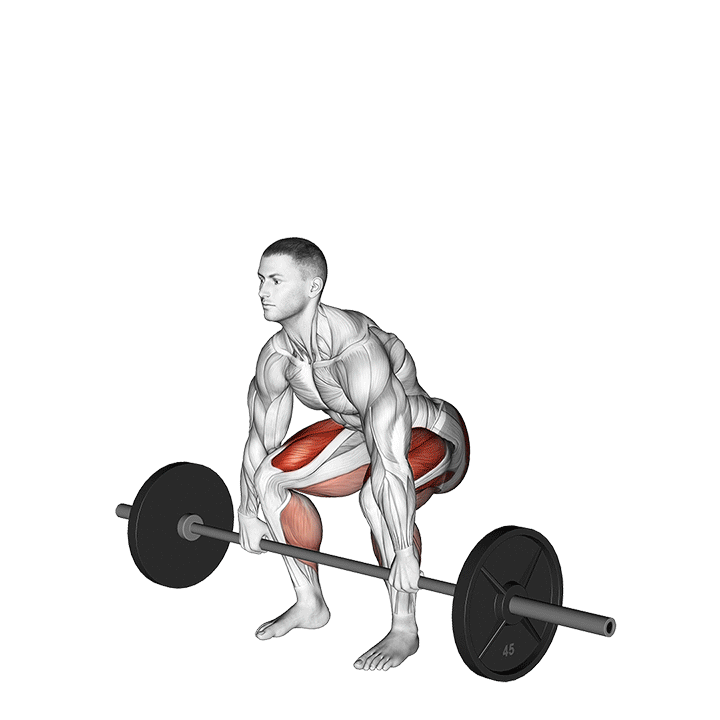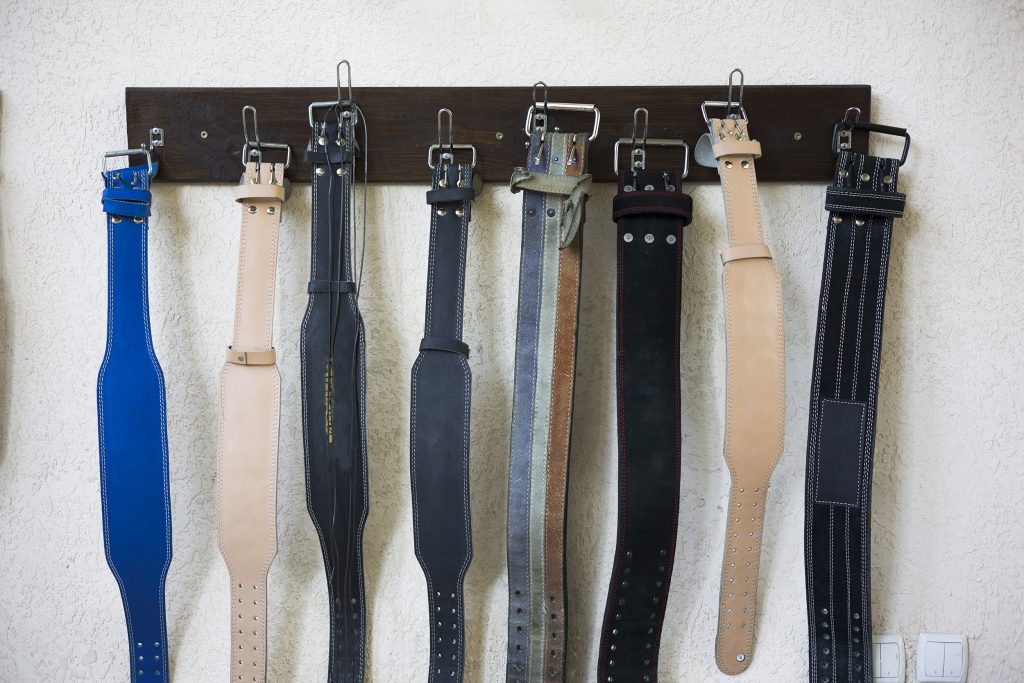Deadlifting Without a Belt: Is it Safe?
Various forms of fitness equipment exist in relation to the deadlift that are meant to improve its efficacy as an exercise or reduce the risk of injury involved in its performance, with the lifting belt being among one of the most recognizable due to its widespread usage for many types of athletes.
However, despite the benefits of using a lifting belt, there are also several drawbacks that can lead exercisers to choose to perform the deadlift without the usage of such equipment.
For the most part, performing the deadlift without a belt is just as sound a decision as doing so with the lifting belt. The choice of whether or not to use one is more a matter of personal preference and training goals than that of actual necessity, making deadlifting without a belt entirely possible if so desired.
What is the Deadlift?
The deadlift is a highly intense free weight compound exercise usually performed with the use of a loaded barbell so as to develop the strength and size of the lower body and back musculature.

In most of its variations, the deadlift contracts the various muscles of the core and lower back to a great degree - primarily for the purposes of ensuring the exerciser does not injure themselves as well as to aid the main muscle groups in providing force to perform the deadlift movement.
The deadlift also places significant pressure on various joints and skeletal structures of the body, with the knees, hips and lumbar portion of the spinal column receiving the brunt of the force associated with performing a repetition of the deadlift.
What is a Lifting Belt?

A lifting belt is a form of safety-related fitness equipment that wraps around the exerciser’s waist in order to greatly reduce the risk of lower back and abdominal injury (among other benefits) during particularly intense lifts, such as in the case of the deadlift.
Lifting belts come in a variety of brands and with a multitude of mechanisms and materials, though most serve the same purpose of retaining core bracing and intra-abdominal static pressure alongside ensuring that the spinal column remains within a set range of motion, thereby preventing injuries such as compressed spinal discs or abdominal hernias.
Are there Different Kinds of Lifting Belts?
Yes, lifting belts can differ quite a bit in terms of appearance and mechanics, though they generally all share the same purpose and are always wrapped around the abdomen in order to achieve said purpose.
For the most part, exercisers wishing to perform the deadlift with a belt will utilize one that is appropriate for their abdominal size, ensuring that it is tight and secure with whatever locking mechanism is built into their particular brand of lifting belt.
How do Lifting Belts Work?
Lifting belts work by providing a hard surface that the exerciser’s abdomen may brace against so as to ensure greater torso stability and a more rigid spinal posture, as well as the fact that it helps regulate pressure-related force directed towards the abdomen by displacing it outside the area of compression.
This reduces the risk of developing hernias as the exerciser braces their core during the deadlift or similar exercises, and ensures that the spine is forced to remain in a stacked and stable position that greatly drops the chance of a disc slipping, becoming compressed or pinching a nerve.
Are Lifting Belts Necessary When Performing the Deadlift?
No, lifting belts are not necessary except at far higher levels of competitive powerlifting - and even then, only in certain sections of the sport itself.
While a lifting belt can no doubt improve the training stimulus and safety of the deadlift exercise, it is still entirely possible to perform said deadlift without the use of any additional fitness equipment, so long as proper form and an appropriate amount of weight is used.
What are the Advantages of Using a Lifting Belt While Deadlifting?
For the most part, lifting belts are most useful either for the development of certain sports-specific training stimuli, for attempting supramaximal or maximal loading of the deadlift for a few repetitions, or for ensuring that the exerciser remains safe and stable throughout a normal set of deadlift repetitions.
Is the Deadlift Safe Without a Belt?
Though a lifting belt doubtless aids in preventing certain types of injuries that may be sustained from the performance of the deadlift, doing so without the use of a belt can be equally as safe so long as the exerciser properly adheres to form and demonstrates their understanding of exercise mechanics.
The lifting belt is meant to simply act as a supplementary implement in regards to the improvement of certain safety mechanics for the deadlift, and as such it is vitally important for all exercisers to practice and master these safety mechanics without the use of a belt in the first place.
Reasons to Avoid Using a Lifting Belt While Deadlifting
While the many benefits of using lifting belts have been outlined earlier in this article, the various disadvantages of utilizing said lifting belts during the performance of the deadlift have yet to be enumerated.
For the most part, the disadvantages of the lifting belt have to do with proper core bracing and the exerciser’s understanding of proper exercise mechanics, as one of the largest pitfalls to equipped deadlifting on a regular basis is becoming overly dependent on said equipment in order to fix the exerciser’s shortcomings in regards to their form.
As such, exercisers wishing to work on this particular aspect of their training may be better off without the use of a lifting belt alongside their deadlift sets.
Better Exercise Mechanics Learning and Form Adherence
Because of the great help lifting belts can provide in regards to proper and safe execution of the deadlift, exercisers may find themselves becoming accustomed to the presence of the lifting belt around their core - affecting how they brace said core, arch their back and generally pay attention to the various cues required to perform the deadlift properly.
Not only is this a psychological disadvantage related to the use of a lifting belt, but also directly relates to the capacity of said core muscles to function in such a manner, as they become unused to contracting to the same extent without the help of a lifting belt, as well as to a less stable range of motion.
Greater Mind-Muscle Connection in the Core Muscles
A key benefit of the lifting belt is also a major disadvantage for it, with its capacity to stabilize and brace the core without the exerciser directly focusing on such a contraction also acting as an incorrect form cue.
During the deadlift, the exerciser must ensure that they are properly contracting their abs, stabilizing with their erector spinae and generally contracting their core musculature so as to keep both the source of resistance and the torso itself in a stable position.
This often requires conscious effort, and is unlearned or otherwise not taught if the exerciser has developed an overreliance on the lifting belt during the deadlift.
Unnecessary for General Training Purposes
Though the usage of a lifting belt is no doubt helpful for a variety of reasons, it is altogether unnecessary, especially for general training purposes that do not involve very heavy amounts of weight, equipped powerlifting competition training, or a level of intensity that places the exerciser at risk of certain types of injuries.
As such, if the exerciser is considering purchasing a lifting belt simply for the purposes of performing the deadlift as a general training exercise; it is wholly unnecessary.
In Conclusion
To conclude this article, deadlifting without a belt is not only entirely possible but also may be beneficial for exercisers with certain training goals or weaknesses in their performance of said deadlift exercise.
This is not to say that one shouldn’t use a lifting belt while deadlifting, simply that it is not a necessity and is better used in an occasional manner wherein the situation calls for the particular benefits that a lifting belt is capable of providing.
References
1. Lander JE, Simonton RL, Giacobbe JK. The effectiveness of weight-belts during the squat exercise. Med Sci Sports Exerc. 1990 Feb;22(1):117-26. PMID: 2304406.
2. Renfro, Gregory J. PTA, CSCS; Ebben, William P. MS, CSCS, *D A Review of the Use of Lifting Belts, Strength and Conditioning Journal: February 2006 - Volume 28 - Issue 1 - p 68-74
3. Fong, Shirley S.M. PT, PhDa,b,∗; Chung, Louisa M.Y. RNutr, DHSca; Gao, Yang MD, PhDc; Lee, Jeff Chak Wai BHEa; Chang, Tak Ching BHEa; Ma, Ada W.W. PhDa The influence of weightlifting belts and wrist straps on deadlift kinematics, time to complete a deadlift and rating of perceived exertion in male recreational weightlifters, Medicine: February 18, 2022 - Volume 101 - Issue 7 - p e28918 doi: 10.1097/MD.0000000000028918
